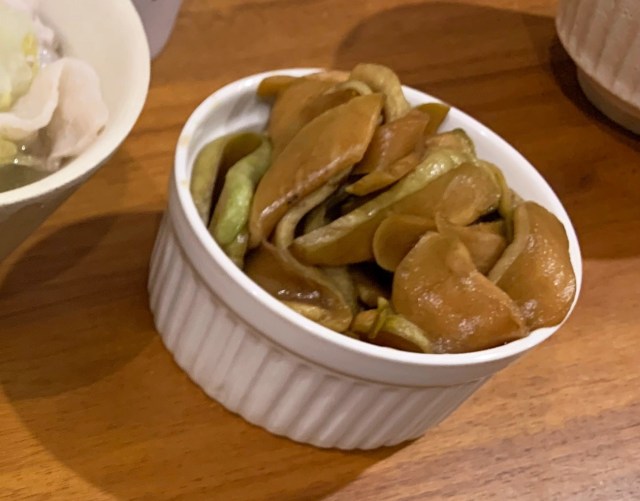
These delicious pickles are hard to obtain, but even harder to stop eating!
Our Japanese-language reporter Seiji Nakazawa recently spent a few days in Fujino, a mountainous area in Sagamihara city, Kanagawa Prefecture. Around an hour outside of Tokyo, Fujino is a rural area with a small population, but is home to the annual Soraniwa Music Festival, which Seiji took part in organising this year.
It was during his time volunteering for the Soraniwa Music Festival that he was gifted a mysterious fruit by a local farmer from Fujino, making him feel like a character in a strange cooking-based RPG.
▼ “It’s dangerous to go alone! Take this.”
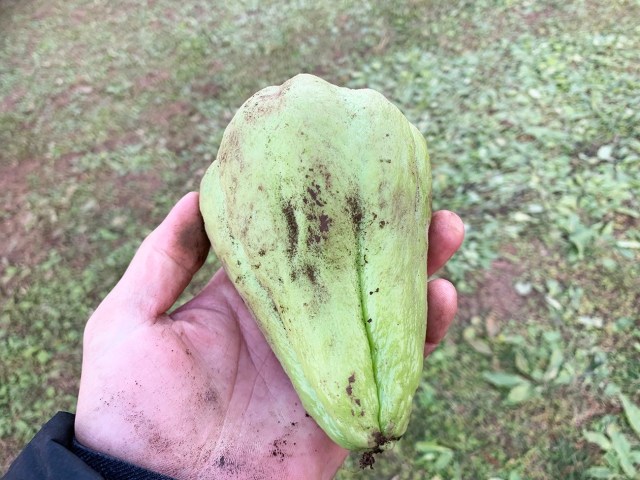
It was gifted to all volunteers who helped at the festival, but Seiji had never seen such a fruit before. It kind of looked like an avocado with its skin peeled off, but the surface of the fruit was dry, tough and rigid. It’s certainly not a common vegetable in Japan, so Seiji was a little puzzled as to what to call it, let alone what to do with it.
He decided to ask Batako, one of his fellow Soraniwa Music Festival volunteers and someone who lives in Fujino. During their conversation, Seiji had a sudden flashback to the day before the festival, where a bunch of the volunteers had spent the night at Batako’s house and she’d made them all dinner.
▼ Cue flashback!

It was delicious, of course, but there had been a part of the meal that stood out to Seiji — the mysterious pickled objects in the ramekin on the right.

The texture was crisp and crunchy, with a gentle sweetness. It was absolutely the best pickled thing Seiji had ever eaten, and he’d eagerly asked Batako what it was called.
“That’s chayote squash,” Batako said.
Chayote squash, also known as mirliton or choko, might have stumped Seiji, but it’s frequently eaten in South America and many parts of Asia. Regular supermarkets throughout Japan aren’t likely to stock chayote squash and Seiji had never seen one in any of his local Tokyo supermarkets, but it’s something of a local specialty in Fujino, with each family having their own special way of preparing it.
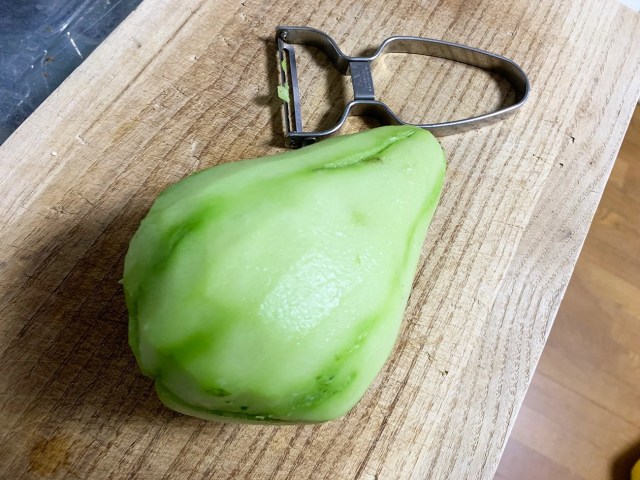
Seiji decided to ask his fellow Soraniwa volunteers to share a recipe with him, and here it is. Thankfully it only involves four simple ingredients — soy sauce, mirin, sake, and chayote squash. Like all the best family recipes, there aren’t exact amounts for each ingredient, so just go with your gut!
First, mix the soy sauce, mirin and sake in a 1:1:1 ratio in a saucepan and bring to a boil. Chop up the chayote squash into thin, bite-sized pieces.
As a side note, there are cases online of people reporting having a reaction to the chayote juice when chopping it. Seiji didn’t have any negative reaction, but those with sensitive skin may wish to wear gloves when handling the fruit.
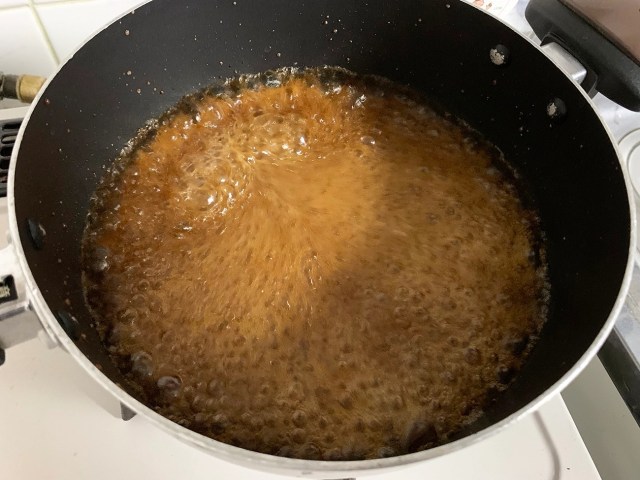
Once the mixture has come to the boil, turn off the heat and stir in your chayote squash.
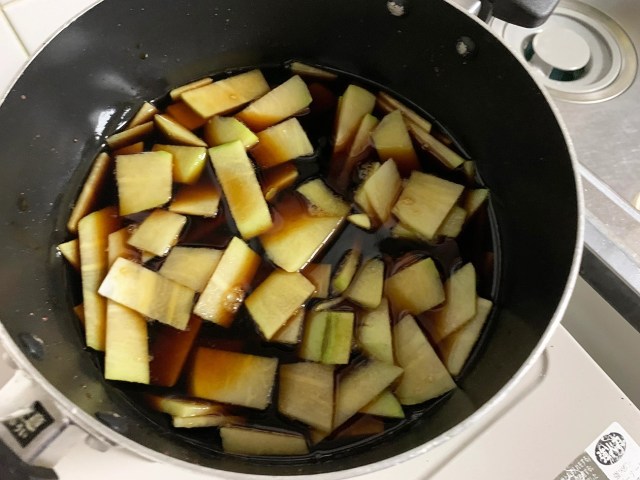
Put a lid on and leave your mixture to stand until it’s ready.
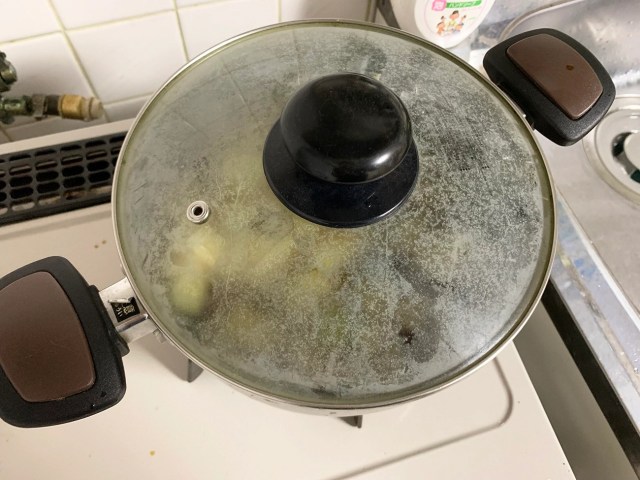
According to some of the volunteers who shared this recipe, boiling the mixture twice will let the squash soak up more of the flavour, but as Seiji went to taste-test his creation, it was almost exactly the same flavour as the squash he had back in Batako’s house!
Seiji’s creation was just a tad more salty that Batako’s, but even so his chopsticks wouldn’t stop moving from the plate to his mouth. He plans to make it again, adding a bit of sugar and vinegar next time, provided he can even find another chayote squash in the first place!
In the meantime, he can always get his pickling fix from his fellow reporter Go Hatori and his professional pickling grandpa.
Photos ©SoraNews24
● Want to hear about SoraNews24’s latest articles as soon as they’re published? Follow us on Facebook and Twitter!

No hay comentarios:
Publicar un comentario